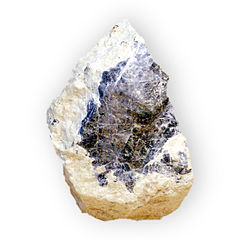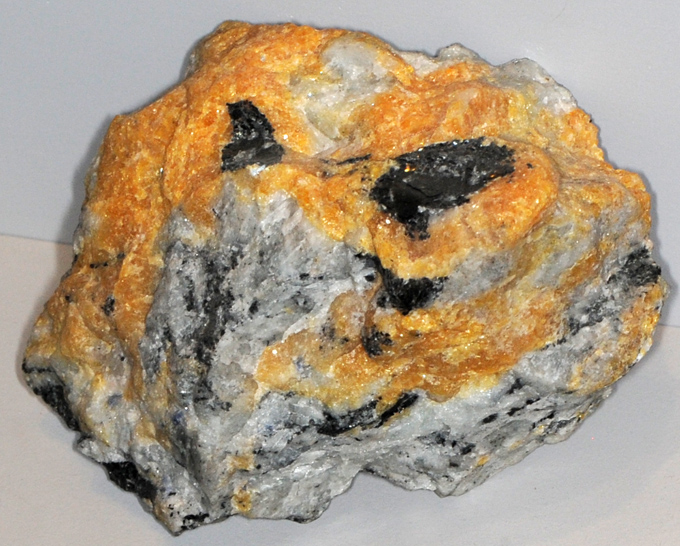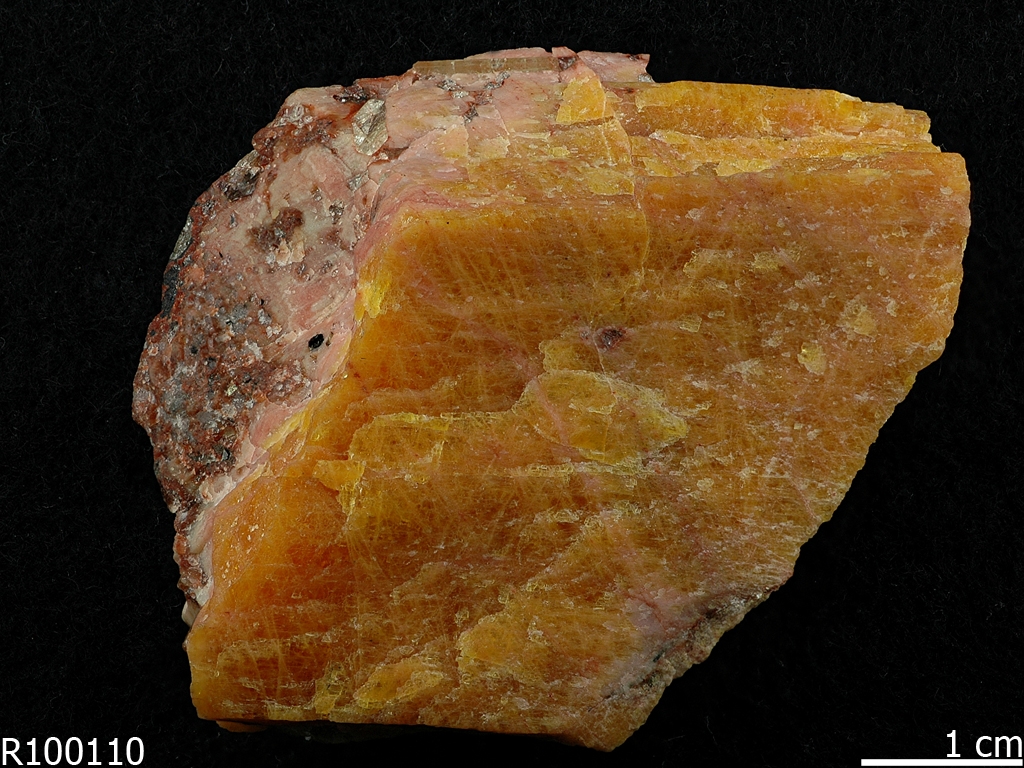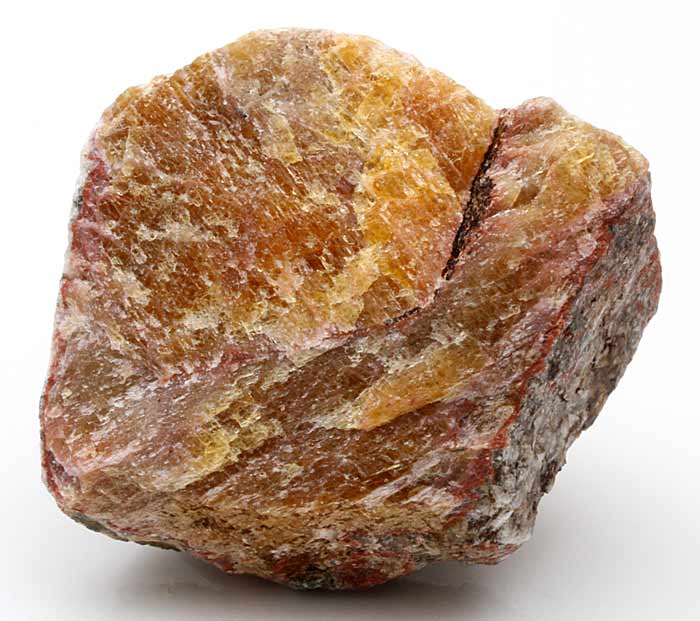Cancrinite
Cancrinite is a rarely occurring mineral from the mineral class of " silicates and Germanates ". It crystallizes in the hexagonal crystal system with the chemical composition Na6Ca2 [( CO3) 2 | Al6Si6O24 ] • 2 H2O and developed prismatic crystals or granular, massive aggregates in the colors white, yellow, orange or blue. Even colorless crystals are known. Cancrinite is one of the Foiden.
Etymology and history
Cancrinite was first discovered in the area of the river Miass in the Russian Chelyabinsk Oblast and described in 1839 by Gustav Rose, who named the mineral after the Russian Minister George Cancrin ( 1774-1845 ).
Classification
Already in the now outdated but still in use 8th edition of the mineral classification by Strunz was one of the cancrinite for mineral class of " silicates and Germanates " and then to the Department of " framework silicates ( tectosilicates ) " where he along with Afghanite, Bystrit, Cancrisilit, Davyn, Farneseit, Franz Init, Giuseppettit, Hydroxycancrinit, Liottit, Marinellit, Mikrosommit, Pitiglianoit, Quadridavyn, Sacrofanit, Tounkit, Vishnevit and Wenkit the independent group VIII/J.09 formed.
The 9th edition used since 2001 and valid by the International Mineralogical Association (IMA ) of the Strunz'schen Mineral classification assigns the cancrinite also in the class of " silicates and Germanates " and there in the department of " framework silicates ( tectosilicates ) without zeolitic H2O" one. This division, however, is further subdivided according to the possible presence of more anions, so that the mineral is found according to its composition in the subsection " framework silicates ( tectosilicates ) with additional anions ," where, along with Afghanite, Alloriit, Balliranoit, Biachellait, Bystrit Cancrisilit, Davyn, Fantappièit, Farneseit, Franz Init, Giuseppettit, Hydroxycancrinit, Liottit, Marinellit, Mikrosommit, Pitiglianoit, Quadridavyn, Sacrofanit, Tounkit and Vishnevit named after him " Cancrinitgruppe " with the system no. 9.FB.05 forms.
The mainly common in English-speaking classification of minerals according to Dana assigns the cancrinite in the class of " silicates and Germanates " and then in the Department of: a " framework silicates Al- Si lattice ". He is also named as the " Cancrinitgruppe " with the system no. 76.02.05 within the subdivision " framework silicates: Al- Si lattice, feldspar and related species " to find.
Education and Locations
Cancrinite crystallize, similar sodalites, magmas from mid to low SiO2 content and appear here with another Foiden.
Locations include Laacher See in Germany, Bancroft / Ontario and Quebec in Canada, Norway, Romania, Russian Federation, as well as Litchfield / Maine in the United States.
Crystal structure
A previously proposed structure was published in 1930 by Linus Pauling, in which he proposed the space group P 63/mmc. The Japanese researchers Kozu and Takane described the structure in the space group P 63 and first reported parallel to the crystallographic c axis by a one-dimensional channel system. However, their proposed structure pointed to unrealistic Si -Si and Si - Al distances. Jarchow succeeded in 1962, the final structure determination in space group P 63
The Cancrinitstruktur can be described as a hexagonal close packing of Si- Al- six-membered rings in direction. This results due to stacking, the characteristic cage structures. In Figure 1, the cage is shown. The points correspond to the positions of the silicon or aluminum atoms in the framework between which, approximately in the center of the bars, there are the oxygen atoms. These cages will be referred to as zeolite chemistry Epsilonkäfige. The spatial arrangement of the cage, as is shown in Figure 2, leads to the formation of a one-dimensional channel system in the direction of the crystallographic c axis. The elements of aluminum, silicon and oxygen form the cages of the framework. Sodium cations are located partly inside the cages and partly in the channels. CO3 anions are found only in the channels.
Use
In science serve synthetic Cancrinite whose composition is often different from that of the mineral, as a model system for zeolites. The Epsilonkäfig of Cancrinits is a structural building block of zeolite L.










